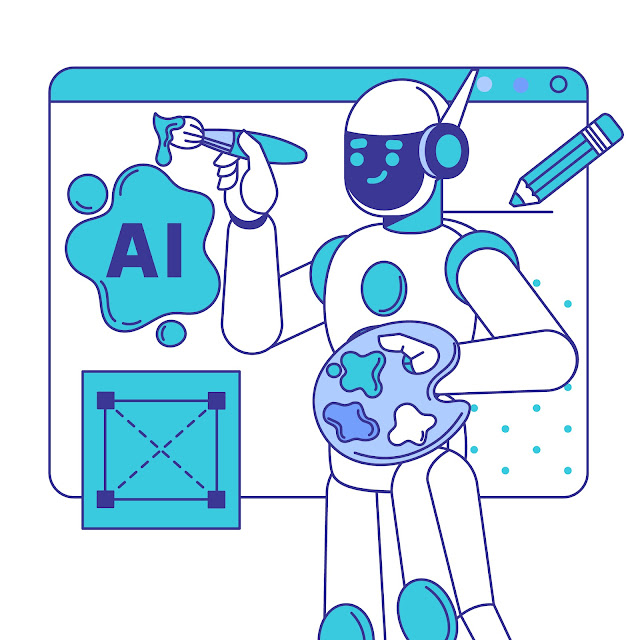The world of animation is constantly evolving, and one of the most exciting advancements is the rise of Artificial Intelligence (AI). From automating tedious tasks to creating groundbreaking new forms of movement, AI is transforming the animation industry. Let's dive into the fascinating world of AI animation and explore its potential to revolutionize the way we create our favorite cartoons and animated films.
The Power of AI in Animation:
- Animation Efficiency: AI can automate repetitive tasks like lip-syncing, character rigging (the process of creating a character's digital skeleton), and in-betweening (creating the frames that bridge key poses). This frees up animators to focus on more creative aspects like character design, storyboarding, and emotional expression.
- Realistic Movement and Effects: AI algorithms can analyze real-world motion capture data to create incredibly lifelike movements for characters. This can be seen in everything from the fluid stride of a running animal to the subtle nuances of human facial expressions. AI can also generate realistic fire, water, and other complex effects, adding depth and realism to animated worlds.
- Generating New Ideas and Concepts: AI can be used to generate new character designs, story ideas, and even entire scenes. This can help animators overcome creative roadblocks and explore new possibilities. Imagine an AI that can brainstorm alongside animators, suggesting unique character traits or unexpected plot twists!
AI: Not a Replacement, But a Powerful Tool
While AI can streamline workflows and generate impressive visuals, it's important to remember that it's not a replacement for human animators. The heart and soul of animation still lies in the creativity, storytelling abilities, and artistic vision of human artists. AI is a powerful tool that can enhance the animation process, but it can't replicate the human touch that brings characters to life and connects with audiences on an emotional level.
The Future of AI Animation:
As AI technology continues to develop, we can expect to see even more innovative applications in animation. Here are some exciting possibilities:
- Interactive Animation: AI could pave the way for interactive animation experiences, where viewers can influence the story or character actions in real-time.
- Personalized Animation: Imagine AI-powered animation that tailors itself to individual viewers, creating unique experiences based on preferences or emotions.
- Emotionally Intelligent Characters: AI could be used to create characters with a deeper understanding of human emotions, allowing for more nuanced and believable interactions between characters and viewers.
The Final Frame: A Bright Future for Animation
AI animation is opening doors to a world of creative possibilities. While some may fear the rise of the machines, AI presents an exciting opportunity to enhance the animation industry, not replace it. With the combined power of human creativity and artificial intelligence, the future of animation looks brighter than ever. So, get ready to be amazed by the next generation of animated characters, brought to life with a touch of artificial magic.
AI Animation Tools: Bringing Your Visions to Life with Artificial Intelligence
The world of animation is embracing the power of Artificial Intelligence (AI), and for good reason. AI tools are transforming the animation process, automating tasks, and creating new possibilities for character movement and storytelling. So, if you're an aspiring animator or a seasoned professional looking to streamline your workflow, here are some exciting AI animation tools to explore:
1. DeepMotion:
- Specialty: Motion Capture and Animation
- Key Features: DeepMotion uses markerless motion capture technology, allowing you to animate characters using real-world movement data. It also offers "SayMotion," a feature that converts text descriptions into character animations, perfect for quick storyboarding or pre-visualization.
2. Runway:
- Specialty: Versatile AI for Creative Applications
- Key Features: Runway isn't specifically an animation tool, but its vast library of AI models can be incredibly useful for animators. You can use it for everything from generating character concept art and backgrounds to creating special effects like fire and rain.
3. Animaker AI:
- Specialty: User-friendly Animation for Beginners and Professionals
- Key Features: Animaker AI offers a user-friendly interface with drag-and-drop functionality, making it perfect for beginners or those new to AI animation. It provides pre-built assets, character templates, and AI-powered lip-syncing to help you create professional-looking animations quickly.
4. Synthesia:
- Specialty: Creating Realistic AI-powered Videos
- Key Features: While not strictly animation, Synthesia focuses on creating realistic human avatars that can be animated to speak and deliver messages. This can be a valuable tool for explainer videos, educational content, or even creating personalized greetings or presentations.
5. Autodesk Maya with Machine Learning Features:
- Specialty: 3D Animation Powerhouse with Integrated AI
- Key Features: Autodesk Maya is a powerhouse in the 3D animation industry, and it's constantly incorporating new AI features. These features include tools for automated retopology (optimizing polygon meshes), AI-powered scene composition suggestions, and even machine learning-based character animation tools.
Choosing the Right AI Tool for You:
The best AI animation tool for you will depend on your specific needs and skill level. Some tools are geared towards beginners, while others offer advanced features for professional animators. Consider what aspects of your workflow you'd like to automate or enhance, and research tools that cater to those needs.
The Future of AI Animation:
The world of AI animation is still evolving, and we can expect to see even more innovative tools emerge in the coming years. These tools will likely push the boundaries of animation, creating more lifelike characters, interactive experiences, and personalized content tailored to viewers.
So, whether you're a seasoned animator or just starting out, AI animation tools offer exciting possibilities to explore. So, embrace the future of animation and see where your creativity and a little artificial intelligence can take you!












